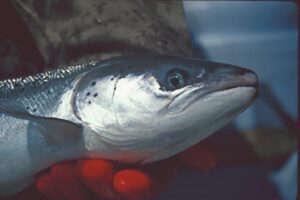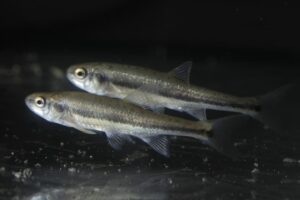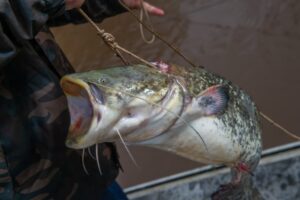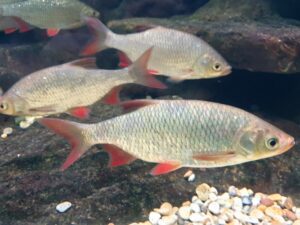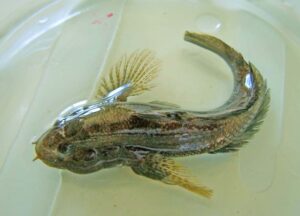Game fish: Allis Shad (Alosa alosa)
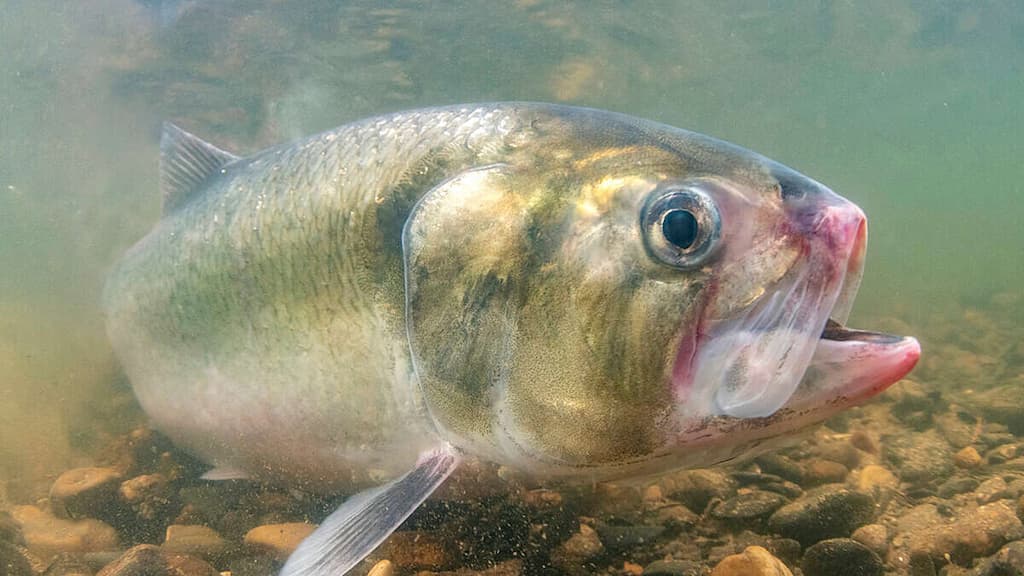
The Allis Shad (Alosa alosa) is a fascinating migratory fish, highly valued by anglers.
This species, part of the Clupeidae family, mainly thrives in the fresh and brackish waters of Europe and North Africa. It is easily recognised by its slender, streamlined body and silvery appearance with blue-green reflections on the back. The migration period for reproduction, typically between April and June, is an especially opportune time for fishermen aiming to catch this fish, renowned for its delicious flesh.
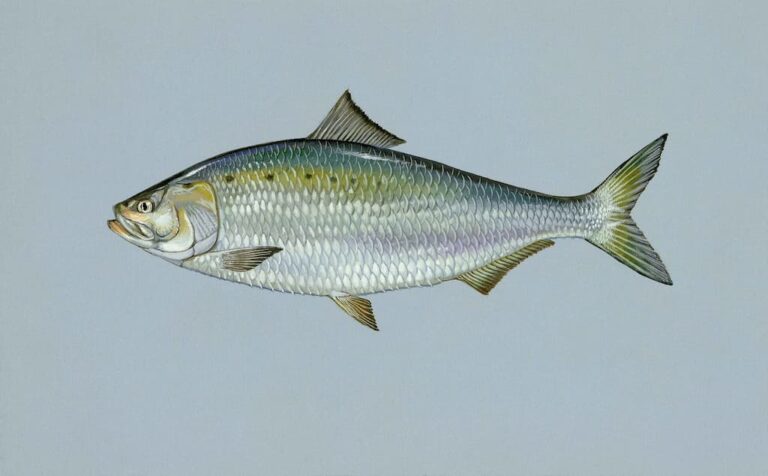
What is an Allis Shad (Alosa alosa)?
The Allis Shad (Alosa alosa) is a migratory fish from the Clupeidae family, inhabiting the fresh and brackish waters of Europe and North Africa. A slender body and a silvery appearance with blue-green reflections characterise it.
Description of the Allis Shad (Alosa alosa)
Identification
The Allis Shad (Alosa alosa) is a slender and streamlined fish, typically measuring between 30 and 40 cm (about 11.8 to 15.7 inches) in length. It has a small head, medium-sized eyes, and a slightly underslung mouth. The jaws have small teeth, and the lower jaw protrudes slightly. Its gills are well-developed, allowing efficient respiration in various aquatic conditions.
The fins of the Allis Shad are well-proportioned, with a dorsal fin located midway down the body and an anal fin near the tail. The pectoral and pelvic fins are relatively large and robust. The fin colouration ranges from grey to brown, with greenish reflections. The fish’s body is blue-green on the back, fading to silvery on the sides and belly.
| Class |
| Actinopterygii |
| Order |
| Clupeiformes |
| Family |
| Clupeidae |
| Genus |
| Alosa |
| Species |
| A. alosa |
| Binomial Name |
| Alosa alosa (Linnaeus, 1758) |
Size and Weight of the Allis Shad
The Allis Shad typically reaches 30 to 40 cm (about 11.8 to 15.7 inches), ranging from 300 grams to 1 kg (about 0.66 to 2.2 pounds). Exceptional specimens can exceed 50 cm (about 19.7 inches) in length and weigh up to 2 kg (about 4.4 pounds). This species’ record size is 75 cm (about 29.5 inches), while the size world record is 2.32 kg (5 lb 2 oz).
Longevity
The average lifespan of the Allis Shad is around 5 to 6 years. However, some individuals can live up to 10 years under favourable conditions. Sexual maturity is usually reached between the ages of 2 and 4, with a peak in reproduction between April and June during freshwater migration.
Habitat and Lifestyle
Habitat
The Allis Shad (Alosa alosa) is primarily found in the fresh and brackish waters of Europe and North Africa. Its geographic distribution extends from the Baltic Sea to the Black Sea, including the Atlantic coasts, the Mediterranean and the Adriatic Seas. This species frequents large rivers and estuaries, where it finds favourable conditions for growth and reproduction. The Allis Shad particularly favours well-oxygenated waters and moderate to rapid currents.
Diet
The Allis Shad mainly feeds on plankton, consuming planktonic organisms such as copepods, cladocerans, and other aquatic invertebrates. It may also eat insect larvae and small fish, depending on the availability of food resources. This varied diet allows the Allis Shad to adapt to different ecological conditions and maintain steady growth.
Reproduction
The life cycle of the Allis Shad is marked by significant migrations between feeding areas in the sea and breeding areas in freshwater. Reproduction generally occurs between April and June, when the fish swim upstream to reach well-oxygenated spawning grounds with moderate currents.
Females lay between 100,000 and 200,000 eggs adhering to rocky or gravelly substrates. The eggs hatch after an incubation period of 3 to 10 days, giving birth to fry that proliferate before descending back to saline waters to continue their growth and reach sexual maturity.
The interest of the Allis Shad for Anglers
The Allis Shad (Alosa alosa) holds several interests for anglers, gourmets, and ecology enthusiasts. This species presents a real challenge for fishermen due to its vivacity and speed in the water. Its migration period for reproduction offers exciting and lively fishing opportunities.
From a culinary standpoint, the Allis Shad is appreciated for its tender and flavorful flesh, which lends itself to various preparations.
Ecologically, the Allis Shad plays an essential role in the food chain and the dynamics of aquatic ecosystems, particularly in regulating plankton and invertebrate populations.
Fishing Techniques for the Allis Shad
Depending on conditions and the angler’s preferences, various techniques can be employed to fish for the Allis Shad.
- Casting and retrieving with lures such as spoons, crankbaits, or soft baits is an effective technique for catching this fast-moving fish.
- Fly fishing, using imitations of tiny larvae or fish, can also yield good results, especially in areas where the Allis Shad gathers for feeding or breeding.
- Finally, float fishing, with delicate and discreet rigs and natural baits like worms or small shrimp, can also be suitable for enticing the Allis Shad.
International names for the Allis shad in Europe
Allis Shad is also known as Mayfish in the UK.
In different European countries, the Allis Shad is known by various names. In France, it is called “Alose vraie,” while in Germany, it is called “Maifisch”. In Spain, it is known as “Sábalo.” In Italy, it is called “Alosa.” These diverse names reflect the species’ widespread distribution and its cultural significance in different regions.
Conservation Status of the Allis Shad (Alosa alosa)
The Allis Shad is classified as “LC” (Least Concern) on the IUCN Red List. The “Least Concern” category corresponds to a widespread and abundant species.
The population of the Allis Shad is currently in decline, mainly due to overfishing, pollution, and the destruction of its natural habitat. Conservation programs and fishing regulations are being implemented to protect this species and ensure its sustainability.
Moreover, I would like to point out that the population of the Allis Shad is also threatened by the increasing presence of the Wels Catfish in its natural habitat. These predators, although generally too slow to catch the Allis Shad during the day, take advantage of the night, especially during spawning, to attack these migratory fish. This nocturnal predation by the Wels Catfish represents an additional threat to the survival of the Allis Shad, exacerbating the challenges it already faces in terms of conservation and protection of its species.

